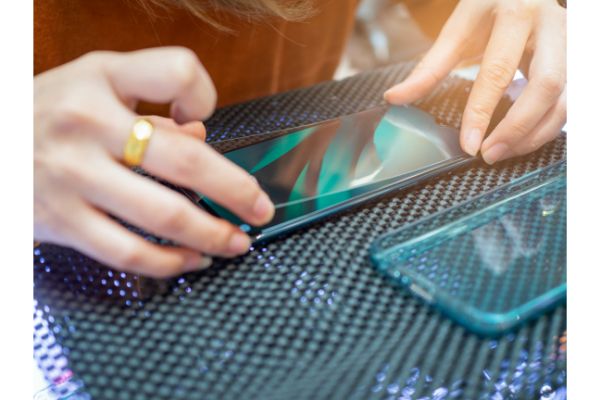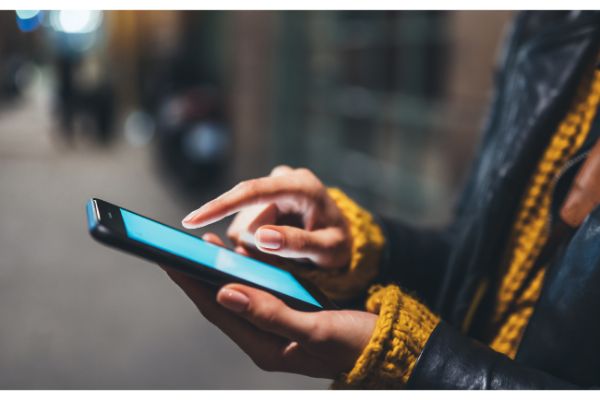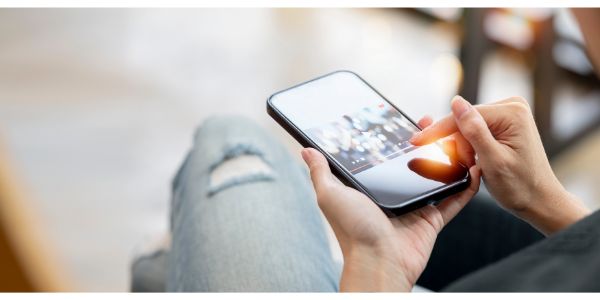Disclaimer: This post may contain affiliate links, meaning we get a small commission if you make a purchase through our links, at no cost to you. For more information, please visit our Disclaimer Page.
Part of the usefulness of smartphones comes from their ability to interact with users simply through touch. No matter what app you are using, you can use a fingertip to control or activate certain functions within that program. You’ll also use your finger to scroll through text, go through various screens or menu options on the phone itself, and access the physical buttons on the device.
This flexibility and convenience comes from the screen of the smartphone itself. Although there is a layer of tempered glass that protects the front of the phone, it also has a membrane that responds to the pressure and movement of your fingertips.
Because the functioning of this screen is so integral to the use of the device, many smartphone owners wonder if there are external forces that might have any impact on the overall sensitivity of the screen’s ability to respond to them. That is the topic that we will go over in today’s article.
As we get deeper into the specifics of how a basic touch screen runs, we will also check out how extra layers of protection over the membrane might alter its sensitivity. Further, we’ll look at the possibility of the screen losing some of that sensitivity over time, and we will try to offer some good tips on what you might be able to do to improve how the screen responds to your touch.
Table of Contents
Does Tempered Glass Affect Touch Sensitivity?
Technically, tempered glass should have no noticeable impact on the sensitivity of your phone’s screen. However, as with many things in the tech world, this generalization may come with some caveats.
When we talk about tempered glass, we are mostly referring to protectors that phone owners can use to add another layer of protection to the front panels of their devices. There are different makes and models for these kinds of accessories, and you can get tempered glass of varying levels of quality.
Although most tempered glass that you can purchase from reputable dealers and brands should not have any negatives to it, it is possible that glass of a lower level of quality may use ingredients or construction that cause it to lessen the sensitivity of your phone’s screen. For this reason, it is a good idea to make sure that you purchase any tempered glass protectors from reputable brands or merchants.
If you are unsure of which kind of protector to get, you can use online communities to get some help. Your phone’s own manufacturer may have recommendations as well.
Even with tempered glass that is up to good standards, there is still a possibility of altering the touch sensitivity of your phone screen inadvertently. Mostly, this is something that will happen based on the curvature of the screen itself. You can also get tempered glass that has some curve to its design.
In either case, this curvature, however slight, could cause a problem with the touch sensitivity of the front panel on your phone. This kind of thing can happen if the curve is not completely correct within the frame of the phone or glass panel. It can also make itself apparent should you fail to install the tempered glass screen with complete accuracy.
Even if you are off by mere millimeters, you could find that your phone’s screen is not as sensitive to your touch as it once was. Should you have any doubts at all, it may be best to get some installation help from a qualified technician.
Do Touch Screens Lose Sensitivity Over Time?
Any components or devices might lose some of their efficacy over time. The same holds true for smartphones and their screens. However, the front panels on modern phones actually have several layers to them, and only one of these layers is the one that responds to your touch.
This layer has others over and under it, all of which make up what you see and feel as your phone’s screen. While it is possible that a smartphone’s front panel might lose some of its sensitivity over time, this should not be something that happens under normal use conditions.
If the touch membrane part of the screen were to take any damage in some way, the damage might contribute to a loss of the screen’s ability to feel or respond to your finger. The outer layers of the screen on a smartphone are tough, and manufacturers build them in order to withstand some kinds of impacts.
In this way, the parts of the screen that are sensitive to your touch have some measure of protection. Furthermore, this is why a smartphone with noticeable cracks in its screen can still work fine.
If we assume normal use for the life of the phone, it should not be likely that it loses touch sensitivity over time. We can dive into things that might affect this level of sensitivity in a later section, but the insulated nature of the responsive part of the screen means that it should work fine for as long as a user might need it to do so.
Certainly, the screen should last for some years being able to respond to a fingertip, and it is possible that many users will trade in or purchase new phone models before they ever experience any issues with how their current phones respond to them.
What Can Affect Phone Touch Sensitivity?
Even though your phone should be able to handle years of constant use without its screen losing any sensitivity, that does not mean that some things can’t impact the level of that sensitivity intermittently.
Our list of possible things that could impact this level may not be comprehensive, but it represents some of the most common things that users might encounter when using their devices daily.
1. Some weather could impact how much your phone’s screen can respond to you. Things like excess water from rain, wind that blows small bits of debris your way, or very cold atmospheric conditions can all cause the touch layer of the screen to be less responsive to you than it would be otherwise.
2. You might be wearing insulation on your hands. Gloves represent one of the most common types of insulation that a person might put on, and this sort of material can affect how sensitive the touch layer on your phone might be.
Manufacturers design phones to respond to fingertips, and any other material that covers this can impact the sensitivity of the phone negatively. If possible, you can use fingerless gloves. Other models that cover the fingers might have elements that still let the phone sense your fingertips normally.
3. Dirt or debris that rests on the screen can make it less responsive to you. In some cases, you may not see the layers of dirt that cover the top of the screen. However, anything that gets between the touch layer of the smartphone and your finger has the potential to impede its ability to sense your movements.
4. Although this is rare, using a phone for many hours consecutively at settings of very high brightness might cause some problems with how sensitive the screen’s touch layer remains.
5. Significant damage to the touch glass could be severe enough to reach the layer that is supposed to respond to your touch. If this happens, the screen might still work. However, the level of its sensitivity may drop. You could also find that it only responds to you with certain movements or greater than normal pressure that you have to exert.
Can You Improve Smartphone Touch Screen Sensitivity? 5 Tips
Yes, there might be some things that you can do in order to make the sensitivity levels better. Our section here will focus on some of the most common things you might be able to do for yourself as the end user.
1. The actual settings for your phone’s display might impede how sensitive its touch screen is to your needs. Major operating systems should have settings for the displays themselves, and you can find these subheadings in the more general area of the phone’s settings menu.
Once there, you should be able to alter the pointer speed for your phone. In effect, this should speed up how quickly the screen responds to you.
2. Similarly, there may be an option on some phone models to recalibrate the screen entirely. If you notice that the touch sensitivity seems to respond too slowly for you, you can try a recalibration to see if it fixes anything.
3. Because dust or dirt can make the screen less responsive than it should be, you should get into the habit of cleaning the front panel of the smartphone regularly.
4. Smartphone design elements mean that they respond well to fingertip touches. For the best sensitivity levels, make sure that you remove any gloves or other coverings before using your phone.
5. Although it may not relate to the sensitivity of the screen directly, a full phone that has several large apps that might cause it to bloat may seem to run quite slowly. Cleaning up the device’s files could help it respond to you faster.
Conclusion
Smartphones need responsive touch screen layers in order to give users the most functionality that they desire. Most of these screens should last for many years if you use them properly. However, debris, damage, or things that dampen your own touch can also impact how well the phone reads your input commands. If you’re having troubles with your phone, you can try some of our troubleshooting tips in today’s article.



